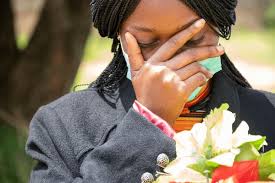VULNERABLE households across the country are expected to start receiving food aid in the next few weeks following the release by Treasury of $11 billion for the commencement of the exercise.
This was said by the Deputy Minister of Public Service, Labour and Social Welfare, Mercy Dinha, during the National Assembly’s Question and Answer session yesterday.
Zimbabwe is experiencing the El-Nino weather phenomena that is expected to see the country receive normal to below normal rainfall and negatively affecting crop yields this season.
“I am happy to inform the House that Treasury has released $11 billion and grain distribution will commence in the coming weeks.
“We have already instructed provincial heads in the various provinces to identify needy families that will receive when the distribution starts,” she said.
Deputy Minister Dinha said part of the money released by Treasury will also go towards payment of transporters who will move the grain to various destinations across the country.
Two weeks ago, Public Service, Labour and Social Welfare Minister July Moyo said three million food-insecure people will start receiving food aid from the Government in this year’s first quarter under the Food Deficit Mitigation Programme.
He said at least 71 500 tonnes of cereals (maize, sorghum and millet) had been set aside for distribution in the first quarter as the Government steps up efforts to ensure every household is food secure.
A scientific assessment was carried out by the Food and Nutrition Council to ascertain possible beneficiaries.
Minister Moyo said the assessment revealed that during the peak hunger period between January and March 2024, about 2 715 717 people will be in need of food assistance.
Provinces with the highest food insecurity levels are Matabeleland North (42 percent), down from 58 percent from the previous year, Mashonaland Central (31 percent) and Masvingo province (30 percent) with the most affected districts being Binga (62 percent), Kariba (60 percent), Mt Darwin (57 percent), Umguza (54 percent), Mbire (53 percent) and Mangwe (50 percent).
SOURCE: ZIMBABWE SITUATION









